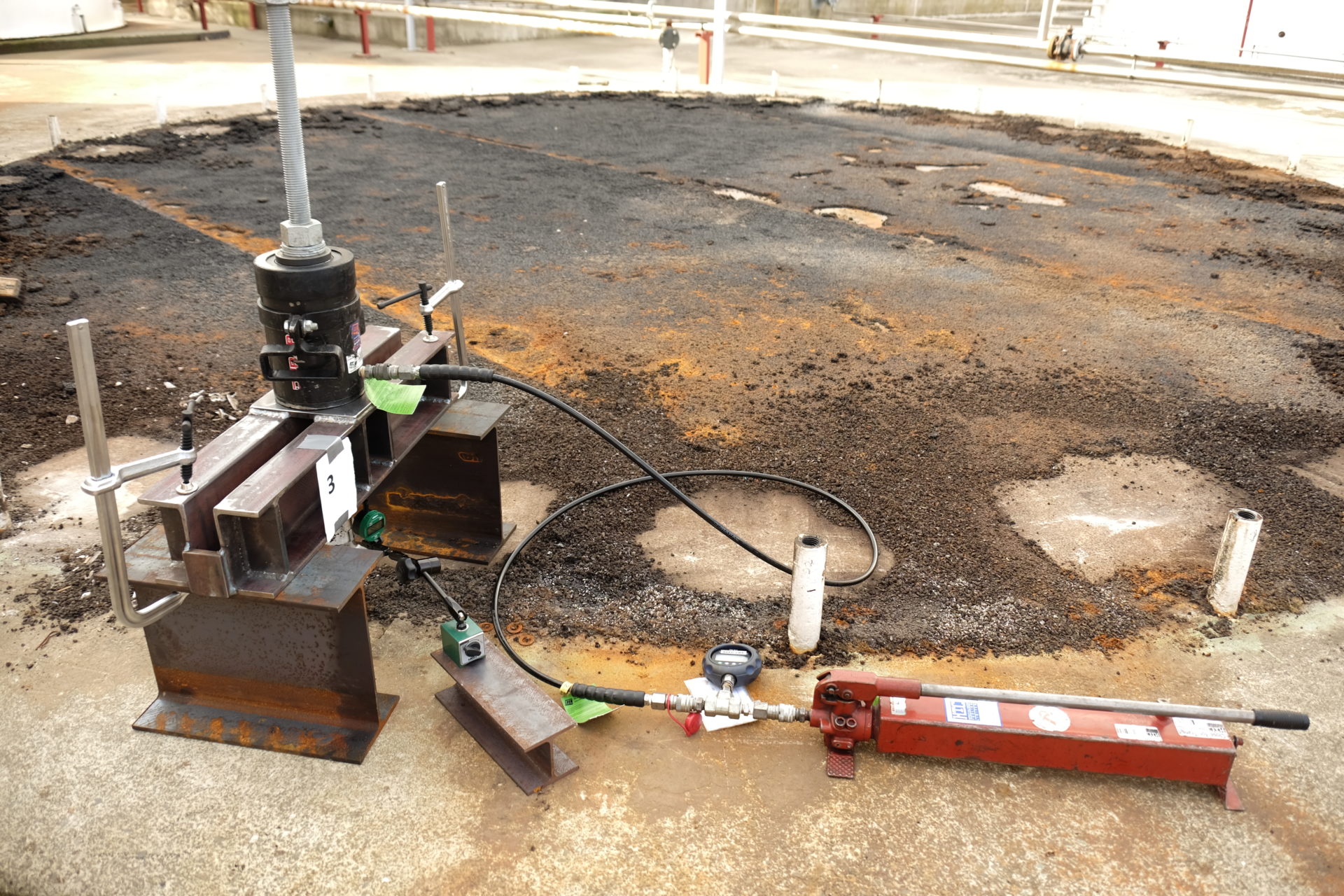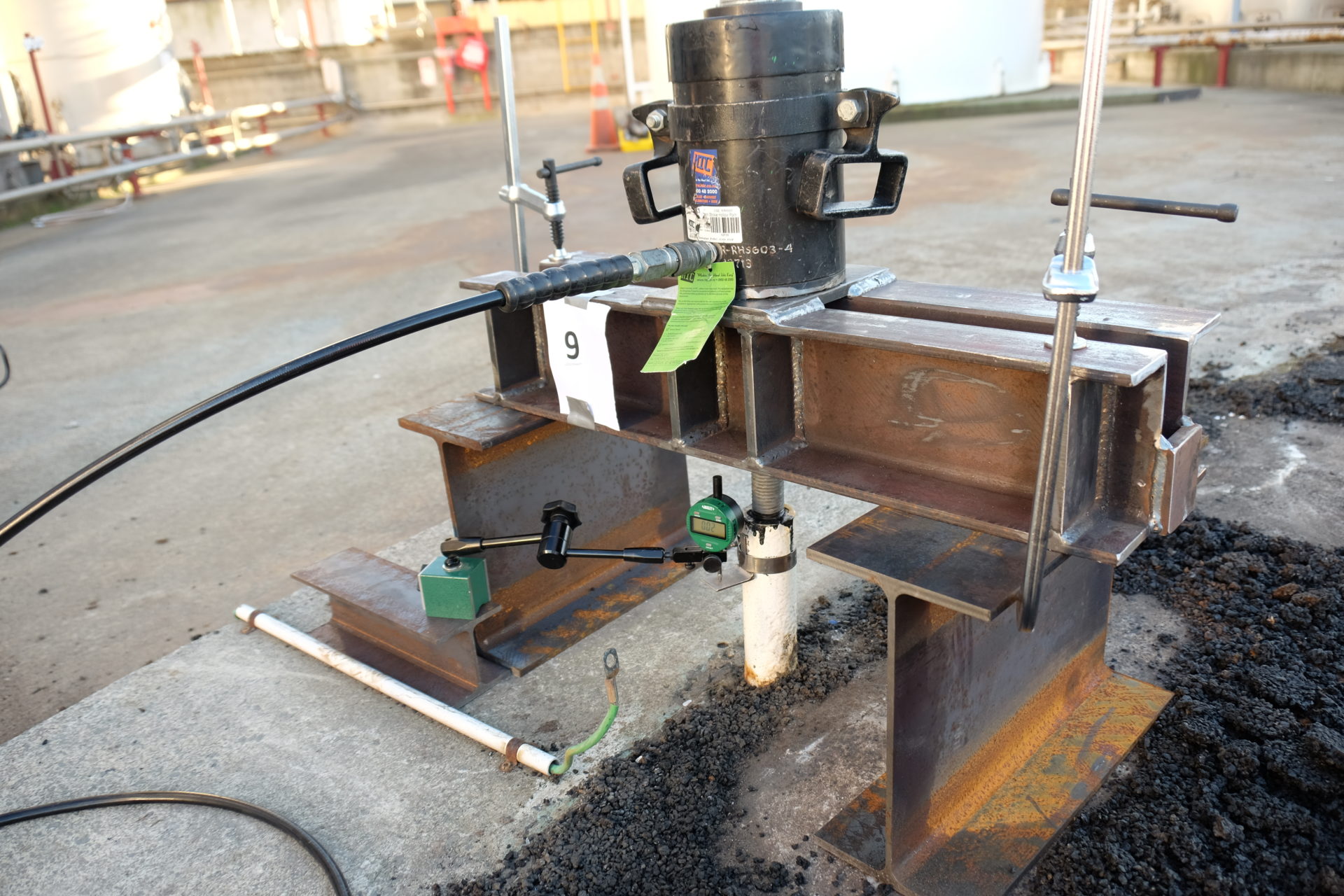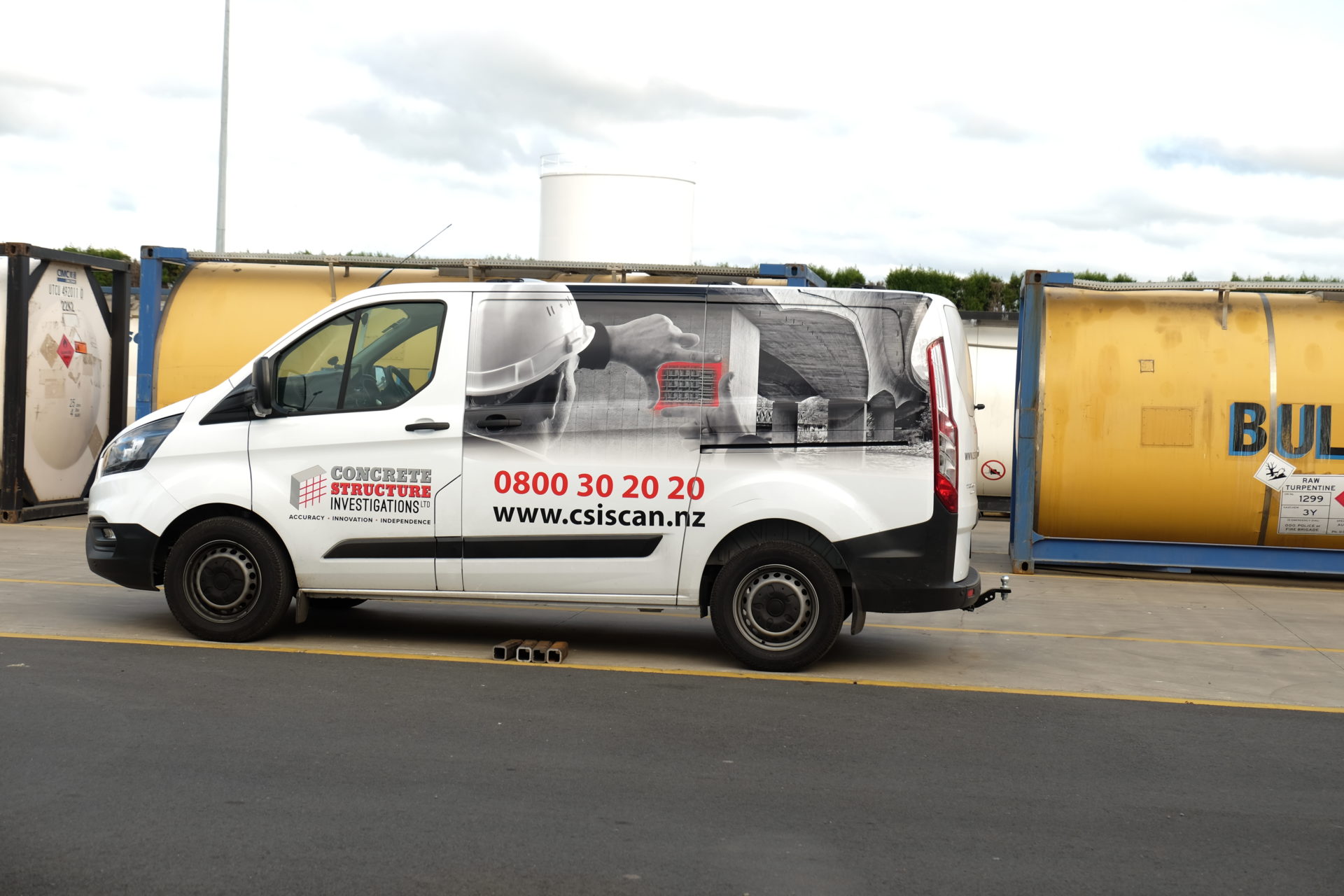CSI was recently working at a Tank Farm in Tauranga where a replacement turpentine tank was going to be put in place. The Tauranga Tank Farm has 31 tanks that carry various substances such as class 3 flammable liquids.
Our team had to test the quality of the anchors that previously fixed down the bottom plates to the concrete slab to determine if they could secure the new structure to the foundation. The following case study breaks down in detail what the project required us to do, how we solved the problem and the outcome of the project. During this project, we used proof of load testing to determine the best outcome for our client.
The objective of this project was for a replacement turpentine tank to be securely attached to the previous foundation. The issue with the previous turpentine tank was that the base had rusted out. Oil and gas industries view corrosion in storage systems as a major cause of releases and equipment failure, so it was important that our test provided accurate results.
CSI was required to carry out tests that would determine the tension demand of the anchors.
We had to test the inserts for holding down bolts in the existing concrete slab. A new turpentine tank was going to replace the previous therefore the inserts in the existing slab needed to be tested to see if they had the strength to carry the new load. The engineer had to assess whether the connections would hold.
This project was carried out the following Testing Standards:
• Proof testing to BS 8539
• Proof load 100 KN
• Monitored movement Test
• Test carried out under the CFA Guidance Notes
And used the following test equipment:
1. 60 Ton Hollow Ram
2. Calibrated Digital Pressure Gauge
3. 2 Speed Hydraulic Hand pump
4. 3m Hose and Couplers
5. Reaction frame
6. Mitutoyo 543782 Plunger Dial Indicator (for monitoring)
7. Fine adjustment linear magnetic base (for monitoring)



Preparation is key and for this project, CSI spent half a day off-site with prep work to ensure that the time on site was used as efficiently as possible. This allowed for the on-site testing to be completed in one day, minimising any disruption on site.
The solution to determining whether or not the inserts were suitable to reuse was to use an investigative pull-out test on the anchors. CSI carried out Pull-Out Tests on each existing insert, of which there were 28 altogether. A Pull-out test was determined as the best solution because these types of tests are normally performed to establish how strong the fixings are between securing material and concrete. Pull-out testing and our Pull-off strength test are performed because of various factors affecting bonding materials. With this test, the different failure modes give us insight into the weakest element that leads to detachment. Pull-out testing minimises the chance of construction malfunctions.
How does Pull-out testing work:
Our extensive Pull-out testing requires the attachment of a piece of equipment to the existing insert/fixing. The equipment that we use is then pulled to determine the stress load level to see how strong the insert is. Using this method allows us to diagnose the potential strength and durability of the structure that will be taking the place of the previous tank.
One of the biggest challenge we had during this project was lugging around our heavy testing gear to 28 sites.
The benefits of the testing were expected to provide an indication as to whether or not fuller research was required to ensure that the anchors (bolts) could perform adequately.
CSI was requested to use a Pull-Out Test method because it was a cost and time effective solution to the problem. CSI’s Pull-Out tests provided quick results and saved our client money. The results of the test determined that the inserts were, in fact, able to carry the new turpentine tank. These results were better than CSI originally expected, as we could tell our clients that they can save more time and money by reusing the old inserts. The clients wouldn’t need to rip out the existing concrete slab to put new inserts in place. The CSI team were able to give their client the confidence that the existing inserts would withstand the imposed load.